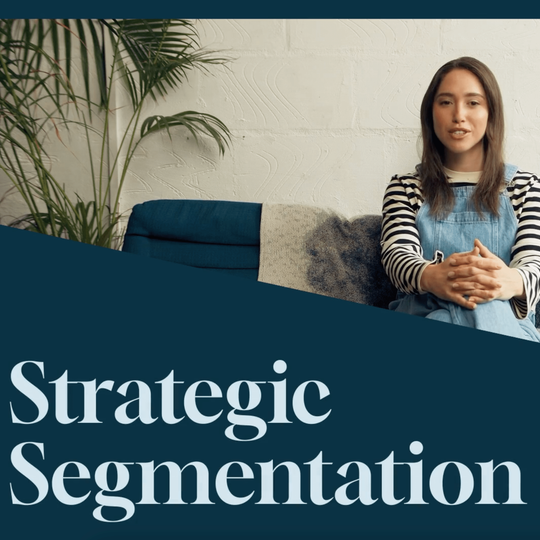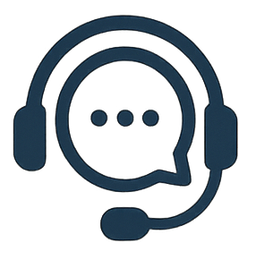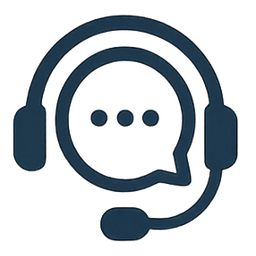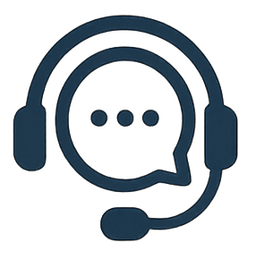
B2B customer segmentation isn't just about revenue figures - it's a strategic approach to identifying and categorizing your most valuable business relationships. While revenue remains a key indicator, successful segmentation delves deeper into the customer relationship landscape.
Understanding B2B Customer Segmentation
Key Identifiers of Best Customers:
- Revenue contribution and profitability
- Strategic alignment with your business goals
- Level of engagement and collaboration
- Growth potential and market influence
- Purchase frequency and contract renewals
Account managers play a crucial role in customer segmentation through their direct interactions and relationship building. They gather invaluable insights about:
- Customer pain points and needs
- Decision-making processes
- Business objectives and growth plans
- Relationship strength and trust levels
Your CRM system serves as the backbone of effective segmentation by:
- Tracking customer interactions and engagement patterns
- Storing historical purchase data and contract information
- Monitoring customer service requests and resolution times
- Identifying cross-selling and up-selling opportunities
Modern B2B segmentation requires a blend of data-driven insights and relationship intelligence. Your CRM data combined with account manager knowledge creates a comprehensive view of each customer's value potential. This approach helps you move beyond traditional revenue-based categorization to build meaningful, growth-oriented customer relationships.
Importance of Customer Retention and Penetration
Customer retention is a critical part of any B2B growth strategy. Research shows that acquiring a new customer costs 5 to 25 times more than keeping an existing one.
Successful retention strategies include:
- Regular account health checks
- Proactive problem resolution
- Customized service levels
- Strategic account planning
- Value-added services
Customer penetration drives revenue growth through existing relationships. You can maximize account value by:
Cross-selling opportunities:
- Introducing complementary products
- Expanding into different departments
- Offering bundled solutions
Up-selling strategies:
- Premium product upgrades
- Enhanced service packages
- Volume-based incentives
Your existing customer base holds untapped potential. A 5% increase in customer retention can lead to a 25-95% increase in profits. By focusing on both retention and penetration, you create a compound effect - retained customers become more valuable through deeper engagement, while deeper relationships strengthen customer loyalty.
Successful B2B companies have systematic approaches to identify and act on these opportunities within their current customer portfolio. They use data analytics and insights from account managers to spot patterns and trigger points for both retention risks and expansion possibilities.
Enhancing Customer Acquisition Strategies
B2B customer acquisition requires a strategic balance between targeting high-value prospects and managing acquisition costs. You'll achieve optimal results by:
1. Identifying Ideal Customer Profiles (ICPs)
- Analyze your current top-performing accounts
- Map common characteristics and buying behaviors
- Create detailed buyer personas
2. Optimizing Cost to Serve
- Calculate customer lifetime value against acquisition costs
- Streamline onboarding processes
- Implement scalable service models
Growth opportunities often lie in unexpected places. Look for customers who:
- Display rapid market expansion
- Have complementary business models
- Show interest in innovative solutions
- Demonstrate strong financial health
- Express willingness to collaborate
Your acquisition strategy should prioritize prospects with the highest potential for long-term value creation. This approach helps you build a sustainable customer base while maintaining healthy profit margins.
Consider implementing account-based marketing (ABM) strategies to target specific high-potential companies. This focused approach yields better results than broad-based marketing efforts and creates stronger initial relationships with new customers.
 Customer ServiceEmily Carter
Customer ServiceEmily Carter
Implementing Effective B2B Segmentation Models
A successful B2B segmentation model requires a strategic blend of data analytics and relationship insights. Here's what makes a segmentation framework truly effective:
- Value-Based Segmentation: Group customers based on their current and potential value to your organization
- Behavioral Patterns: Track purchasing habits, engagement levels, and communication preferences
- Decision-Making Structure: Map the key stakeholders and their roles within each customer organization
Your segmentation model should answer these critical questions:
- Which customers have the highest growth potential?
- What resources should you allocate to different customer segments?
- How can you tailor your service approach for each segment?
Key Implementation Steps:
- Define clear segment criteria
- Establish segment-specific KPIs
- Create customized engagement strategies
- Regular review and adjustment of segmentation parameters
A dynamic B2B segmentation model adapts to changing market conditions and evolving customer needs. Your model should incorporate both quantitative metrics and qualitative insights from your sales and account management teams.
The Role of Relationship and Trust in B2B Segmentation
Trust is the foundation of successful B2B relationships. Your ability to build and maintain trust directly impacts customer loyalty, retention rates, and business growth potential.
Key Trust-Building Elements in B2B:
- Consistent delivery of promises
- Transparent communication
- Proactive problem-solving
- Regular engagement and follow-up
- Deep understanding of customer needs
The depth of relationships varies among your customers. High-trust relationships often involve:
- Multi-level engagement between organizations
- Strategic partnership discussions
- Access to senior decision-makers
- Joint innovation initiatives
- Shared risk-reward scenarios
Your segmentation approach needs to consider these varying trust levels. Customers with established trust relationships require different treatment than new accounts still in the trust-building phase.
A practical trust assessment includes measuring:
- Length of relationship
- Number of touchpoints
- Product adoption levels
- Strategic alignment
- Communication frequency
- Problem resolution history
These metrics help you understand the strength of your relationships and find ways to improve trust within each customer segment.
 Customer ServiceEmily Carter
Customer ServiceEmily Carter
Introducing the Customer Segmentation Canvas
The Customer Segmentation Canvas is a new way for B2B businesses to categorize their customers. It provides free tools and resources to help companies create segmentation models that are tailored to their specific needs and drive growth.
How Does the Canvas Work?
The Canvas uses two main factors to classify customers:
- Relationship and Trust Level: This factor looks at how long a customer has been with the company and how many products they use.
- Growth Potential: This factor assesses the potential for growth in the customer's business and whether there is mutual interest in expanding the partnership.
Why Use the Customer Segmentation Canvas?
The Canvas offers several benefits over traditional methods of customer segmentation:
- It goes beyond just looking at revenue figures by considering the depth of the relationship and potential for growth.
- It provides a visual representation of your customer base, making it easier to identify patterns and trends.
- It helps you allocate resources more effectively by prioritizing customers with high growth potential.
By using the Customer Segmentation Canvas, businesses can gain a deeper understanding of their customers and develop targeted strategies for engagement and resource allocation.
Applying Customer Segmentation in Practice
Transforming customer segmentation insights into actionable strategies requires a systematic approach. You'll need to develop specific management plans for each segment identified in your framework.
Here's how to put segmentation into practice:
1. Create Segment-Specific Strategies
- Design tailored communication approaches
- Set appropriate service levels
- Develop targeted product offerings
2. Implement Performance Metrics
- Track customer engagement levels
- Measure relationship growth
- Monitor value creation
3. Align Internal Resources
- Train account managers on segment-specific needs
- Allocate resources based on segment potential
- Adjust service delivery models
The success of your segmentation strategy depends on consistent execution across all customer touchpoints. Your CRM system becomes a vital tool for tracking and managing these interactions, enabling you to adjust your approach based on real-time customer behavior and feedback.
Remember to regularly review and update your segmentation model as customer relationships evolve and market conditions change. This dynamic approach ensures your segmentation strategy remains relevant and effective in driving business growth.
 Customer ServiceEmily Carter
Customer ServiceEmily Carter
Discovering Hidden Value in B2B Relationships
B2B customer segmentation reveals hidden opportunities within your existing customer base. Your segmentation analysis might uncover:
- Underserved Accounts: High-potential customers receiving basic service levels
- Cross-Selling Prospects: Customers using limited product lines despite broader needs
- Strategic Partnership Candidates: Accounts ready for deeper collaboration
The true value often lies in the relationship quality rather than just transaction volumes. A mid-tier customer showing strong engagement signals might hold more growth potential than a larger account with minimal interaction.
Consider these value indicators:
- Decision-maker accessibility
- Openness to innovation
- Alignment with your strategic direction
- Resource investment in the partnership
- Mutual growth objectives
Your segmentation model should track these qualitative factors alongside quantitative metrics. By identifying accounts with high trust levels and growth appetite, you can prioritize resources where they'll generate the strongest returns.
A systematic approach to uncovering this potential requires regular assessment of customer engagement patterns, buying behaviors, and relationship development stages. This dynamic view helps you spot emerging opportunities before your competitors.
Sign up for Customer Service
The best customer service newsletter !
No spam. Unsubscribe anytime.
Conclusion
Ready to transform your B2B customer relationships? The Customer Segmentation Canvas offers a practical framework to unlock hidden value in your business relationships.
Take the next step:
- Download our free workbook and blank canvas
- Schedule a consultation for implementing segmentation at scale
- Learn how to integrate these models into your CRM system
Your journey toward improved organizational performance starts with effective customer segmentation. Our team of B2B customer management experts stands ready to guide you through the implementation process, helping you identify and nurture the relationships that will drive your future growth.
Transform your customer relationships today - your untapped business value awaits.
FAQs (Frequently Asked Questions)
What is B2B customer segmentation and why is it important ?
B2B customer segmentation involves categorizing business customers based on specific criteria to unlock potential value. It helps companies identify their best customers, tailor marketing strategies, and optimize resource allocation for improved organizational performance.
How do account managers contribute to effective B2B customer segmentation ?
Account managers play a crucial role in B2B customer segmentation by leveraging their direct relationships with clients to gather insights, assess trust levels, and develop tailored management plans that enhance customer retention and deepen relationships through cross-selling and up-selling.
What strategies can businesses use to improve customer retention and penetration in B2B markets ?
Businesses can improve customer retention by implementing relationship marketing techniques, utilizing CRM systems for targeted segmentation, and focusing on deepening existing relationships through strategic cross-selling and up-selling initiatives that increase customer lifetime value.
How does the Customer Segmentation Canvas facilitate better B2B segmentation ?
The Customer Segmentation Canvas is a new approach introduced by Customer Attuned that provides a structured framework for segmenting B2B customers. It enables companies to visualize and implement actionable segmentation strategies that unlock untapped potential value within their customer base.
What role do relationship and trust play in successful B2B segmentation ?
Relationship and trust are foundational in B2B segmentation as they influence customer loyalty and engagement. Building strong, trust-based relationships allows companies to better understand client needs, tailor offerings effectively, and foster long-term partnerships that drive growth opportunities.
How can organizations implement B2B segmentation models at scale to improve performance ?
Organizations can implement B2B segmentation models at scale by adopting comprehensive frameworks like the Customer Segmentation Canvas, integrating CRM tools for data-driven insights, training account managers in relationship marketing, and continuously evaluating strategies to enhance acquisition, retention, and penetration efforts.
Related posts
DOSE OF WISDOM IN YOUR INBOX
By signing up for the Customer Service mailing list you will receive exclusive marketing resources, be the first to hear about events, workshops, and have access to subscriber only content!
Written by






